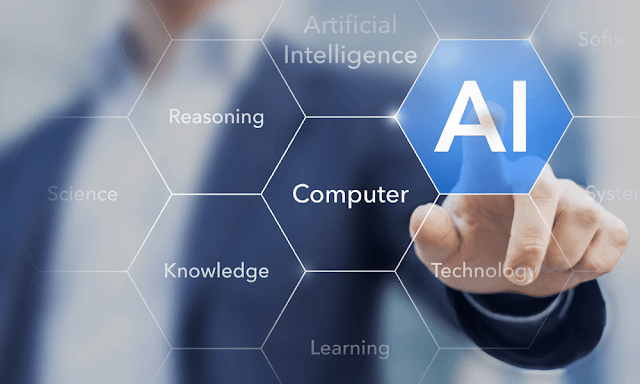What is AI (Artificial Intelligence)? Easy and easy explanation from the meaning and definition of words to machine learning/deep learning
AI (artificial intelligence) is like a "computer with human-like intelligence," with the major feature of "learning on its own." It is also installed in familiar electronic devices such as PCs and smartphones, and now is the time when many AIs (artificial intelligence) are active in human society.
Many of the latest functions brought about by AI (artificial intelligence) are revolutionary, overturning conventional wisdom, and play an important factor in promoting DX (digital transformation).
However, while AI (artificial intelligence) has become very familiar, there are still many people who "somehow understand" without knowing its essential meaning and mechanism.
What is AI (Artificial Intelligence)?
I will explain from the basic knowledge of AI (artificial intelligence)

Image source – Google | Image by bernard marr
The term AI (artificial intelligence) was first used in 1956. It was proposed by Professor John McCarthy, a computer scientist and cognitive scientist, at the Dartmouth Conference held at Dartmouth College in the United States.
What does "AI" stand for?
AI is an abbreviation for Artificial Intelligence. Artificial means "artificial" and Intelligence means "intelligence / intelligence".
Antonym of AI (artificial intelligence)
The antonym of AI is Nature Intelligence. The abbreviation is NI. The Japanese translation of Nature Intelligence is the word "natural intelligence," which refers to the intelligence created by nature, such as humans and animals.
Definition of AI (artificial intelligence)
The Japanese Society for Artificial Intelligence has translated and introduced the words of Professor John McCarthy, the creator of the word AI (artificial intelligence), as "intelligent machines, especially the science and technology for creating intelligent computer programs." I am.
However, now that research on AI (artificial intelligence) has progressed, the current situation is that each researcher is defined in a different language. The definition of AI (artificial intelligence) by major researchers in Japan is as follows.
First AI boom (late 1950s-1960s)
From the late 1950s to the 1960s, when the Dartmouth Conference, which coined the term "AI (artificial intelligence)," was held, the first AI (artificial intelligence) boom broke out.
Behind the boom was the ability to "infer" and "search" by computer, and to derive answers to specific problems. However, AI at that time was limited to problems with clear rules and definitions.
The AI (artificial intelligence) boom gradually slowed down as it became clear that it was not possible to solve the problem of the complicated intertwining of various factors occurring in the real world. In the 1970s, the winter era (stagnation period) was reached.
Second AI boom (1980s-1990s)
The second AI (artificial intelligence) boom arrived in the 1980s and 1990s. A major factor is that the birth of the "expert system" has made "knowledge representation" possible.
The expert system is an artificial intelligence that composes knowledge with a group of rules such as "If it is ○, do ×. In other cases, do △". There is no mechanism to learn by yourself, but it works by predicting the situation as much as the expert can think of in advance and preparing coping methods and judgments.
The more rules there are, the better the accuracy, but all the necessary information must be manually understood by the computer, and the actual information that can be used is limited to information in a specific area. Just. Since the amount of knowledge that can be utilized was limited in this way, AI (artificial intelligence) entered the winter era again from around 1995.
Third AI boom (2000s-present)
The third AI (artificial intelligence) boom began in the 2000s and is still in the midst of 2019 when this article was written.
The reason for the boom was the progress of the practical application of "machine learning" in which AI (artificial intelligence) itself acquires knowledge from a large amount of data (big data). Furthermore, in 2006, deep learning (deep learning) was proposed in which AI (artificial intelligence) learns the elements (features) that define knowledge by itself, which spurred the boom.
Typical AI (artificial intelligence) algorithm
We will explain typical algorithms such as "neural network", "genetic algorithm", an "expert system", which are also called AI three families, which play an important role in AI (artificial intelligence) research.
Neural networks are AI (artificial intelligence) that model the structure and function of neurons (nerve cells that make up the brain of living organisms). A neuron is excited when it receives an electrical signal above a certain value from another neuron and sends an electrical signal to the neuron connected to that point. This is a numerical model of the mechanism of cooperative behavior between neurons.
A neural network consists of an input layer that stores data, an intermediate layer (hidden layer) that processes weights flowing from the input layer, and an output layer that outputs results. When a human becomes a teacher and teaches a set of examples and model answers (teacher signals) to the neural network, the neural network itself will judge and infer even the range that is not taught.




0 Comments